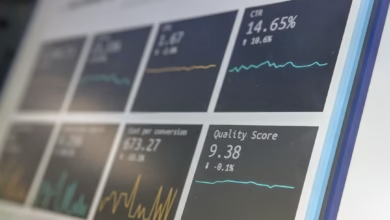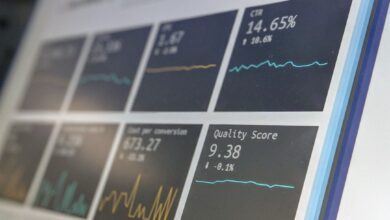Mastering Swing Trading: Effective Strategies and Risk Management for Stock and Forex Traders

Swing trading has emerged as a popular trading strategy among investors seeking to capitalize on price fluctuations in various markets, including stock trading, forex trading, and commodities trading. This approach involves holding positions for several days, allowing traders to capture short- to medium-term price swings. Unlike day trading, which requires constant monitoring of the markets, swing trading offers a more flexible schedule while still enabling traders to engage in market analysis and strategic decision-making.
In this article, we will delve into the fundamentals of swing trading, exploring its advantages and how it differs from other trading styles such as high-frequency trading and scalping. We will also discuss key trading strategies that incorporate both technical analysis and fundamental analysis to enhance your swing trading success. Moreover, we will highlight the importance of risk management, focusing on how to balance leverage trading and trading psychology to protect your capital. Whether you are involved in options trading, futures trading, or crypto trading, understanding the nuances of swing trading can significantly improve your overall trading performance. Join us as we uncover the essentials of this strategic approach to trading.
- 1. Understanding Swing Trading: A Strategic Approach to Stock and Forex Trading
- 2. Key Trading Strategies for Successful Swing Trading: Technical and Fundamental Analysis
- 3. Risk Management in Swing Trading: Balancing Leverage and Trading Psychology
1. Understanding Swing Trading: A Strategic Approach to Stock and Forex Trading
Swing trading is a strategic approach to trading that focuses on capturing price swings in various financial markets, including stock trading, forex trading, and commodities trading. Unlike day trading, which involves making numerous trades within a single day, swing trading allows traders to hold positions for several days to weeks, aiming to benefit from short- to medium-term market movements.
Understanding swing trading requires a solid foundation in both technical analysis and fundamental analysis. Technical analysis involves analyzing price charts and using various indicators to identify potential entry and exit points. Swing traders often look for patterns or signals that suggest a price movement is imminent, allowing them to make informed decisions. On the other hand, fundamental analysis provides insights into the broader economic factors that can influence price swings, such as earnings reports, economic indicators, and market sentiment.
Risk management is a crucial aspect of swing trading. Traders must be able to assess their risk tolerance and implement strategies that protect their capital. This may involve setting stop-loss orders and determining appropriate position sizes based on leverage trading and margin trading principles. Effective risk management helps mitigate potential losses and enables traders to maintain a sustainable approach to their trading strategies.
Swing trading can be applied across various trading instruments, including options trading, futures trading, and even crypto trading. With the rise of online trading platforms, traders now have access to a wide range of tools and resources to support their trading endeavors. From algorithmic trading and high-frequency trading to copy trading and social trading, modern technology has revolutionized how traders execute their strategies.
Moreover, swing trading can be executed in diverse markets such as index trading, energy trading, and derivatives trading, offering traders multiple avenues to explore. As traders develop their swing trading strategies, they must also consider trading psychology, as emotional discipline plays a vital role in making rational decisions and avoiding impulsive trades.
In conclusion, swing trading presents an opportunity for traders to capitalize on price swings while employing structured risk management and analytical techniques. By understanding the nuances of swing trading and integrating effective trading strategies, traders can enhance their potential for success in the dynamic world of online trading.
2. Key Trading Strategies for Successful Swing Trading: Technical and Fundamental Analysis
Successful swing trading relies heavily on effective trading strategies, particularly technical and fundamental analysis. By employing these methods, traders can make informed decisions that capitalize on price swings over several days.
Technical analysis focuses on historical price movements and market trends. Swing traders utilize various tools such as charts, indicators, and patterns to identify potential entry and exit points. Popular technical indicators include moving averages, Relative Strength Index (RSI), and Fibonacci retracements. These tools help traders assess market momentum and determine overbought or oversold conditions, which are crucial for timing trades effectively. With the rise of online trading platforms, traders can access advanced charting tools and platforms for real-time market analysis, making it easier to implement technical strategies in both stock trading and forex trading.
On the other hand, fundamental analysis involves evaluating the underlying factors that can influence the price of assets. This could include economic indicators, earnings reports, and industry trends. For instance, swing traders in commodities trading might analyze supply and demand dynamics or geopolitical events that could impact energy prices. Understanding the fundamentals can provide valuable insights, especially for those engaged in futures trading and options trading, where market conditions can change rapidly.
Combining both technical and fundamental analysis can significantly enhance a trader's overall strategy. For example, a trader might use technical analysis to identify a potential buying opportunity based on chart patterns while simultaneously considering fundamental factors such as upcoming earnings reports or economic data releases. This dual approach not only improves the accuracy of trades but also reinforces risk management strategies, which are essential in any trading environment.
Moreover, trading psychology plays a critical role in swing trading. Traders must remain disciplined and avoid emotional decision-making, especially when market volatility increases. Incorporating techniques such as setting stop-loss orders and adhering to a consistent trading plan can help maintain a balanced approach. Ultimately, successful swing trading requires a blend of technical proficiency, fundamental insight, and a strong psychological framework to navigate the complexities of the market.
In summary, embracing both technical and fundamental analysis as part of a comprehensive trading strategy empowers swing traders to make informed decisions and capture price swings effectively, whether in stock trading, crypto trading, or derivatives trading. By continually refining these skills, traders can enhance their performance and achieve their trading goals.
3. Risk Management in Swing Trading: Balancing Leverage and Trading Psychology
Risk management is a crucial aspect of swing trading, as it helps traders navigate the inherent volatility and uncertainty of the market. Balancing leverage and trading psychology is essential for long-term success in various trading environments, including stock trading, forex trading, and crypto trading.
Leverage trading can amplify both gains and losses, making it a double-edged sword. While high leverage may allow traders to maximize their potential profits, it also increases the risk of significant losses. Therefore, it is vital for swing traders to use appropriate leverage ratios and establish clear stop-loss orders to protect their capital. This practice is particularly important in derivatives trading, where market movements can be rapid and unpredictable.
In addition to managing leverage, understanding trading psychology is key for maintaining a disciplined approach. Emotional reactions can lead to impulsive decision-making, which is detrimental in swing trading. Traders should cultivate a mindset that emphasizes patience and adherence to their trading strategies. Techniques such as keeping a trading journal can help traders reflect on their decisions and improve their emotional resilience.
To effectively balance these elements, swing traders should implement well-defined risk management strategies. This includes:
– Setting a risk-reward ratio for each trade, typically aiming for at least 1:2 to ensure that potential rewards justify the risks taken.
– Diversifying their portfolios across different asset classes, such as commodities trading, index trading, or even ETF trading, to mitigate risk exposure.
– Regularly conducting technical analysis and fundamental analysis to inform their trading decisions, ensuring they are aligned with market trends.
In conclusion, effective risk management in swing trading requires a careful balance between leverage and trading psychology. By employing sound trading strategies and maintaining a disciplined approach, traders can navigate the complexities of the market while safeguarding their capital. This balance is not only essential for swing trading but also beneficial across various trading styles, including day trading, scalping, and algorithmic trading, ultimately leading to a more sustainable trading career.
In conclusion, swing trading offers a dynamic approach for traders looking to capitalize on price movements over several days, making it an appealing strategy in both stock and forex trading environments. By understanding the fundamentals of swing trading, traders can effectively employ key strategies that leverage both technical and fundamental analysis to identify potential opportunities. However, successful swing trading is not solely about strategy; it also requires a strong focus on risk management and trading psychology to navigate the inevitable ups and downs of the market.
As you embark on your swing trading journey, remember to balance your leverage trading effectively and remain disciplined in your approach, whether you're engaging in options trading, futures trading, or even crypto trading. By maintaining a well-rounded perspective that incorporates market analysis and a thorough understanding of your trading strategies, you'll be better equipped to mitigate risks and maximize gains.
Ultimately, whether you are utilizing online trading platforms for day trading, index trading, or commodities trading, the principles of swing trading serve as a foundation for a versatile trading approach. Embrace the journey of learning and adapting your strategies, and you'll find that swing trading can be a rewarding component of your overall trading portfolio.





